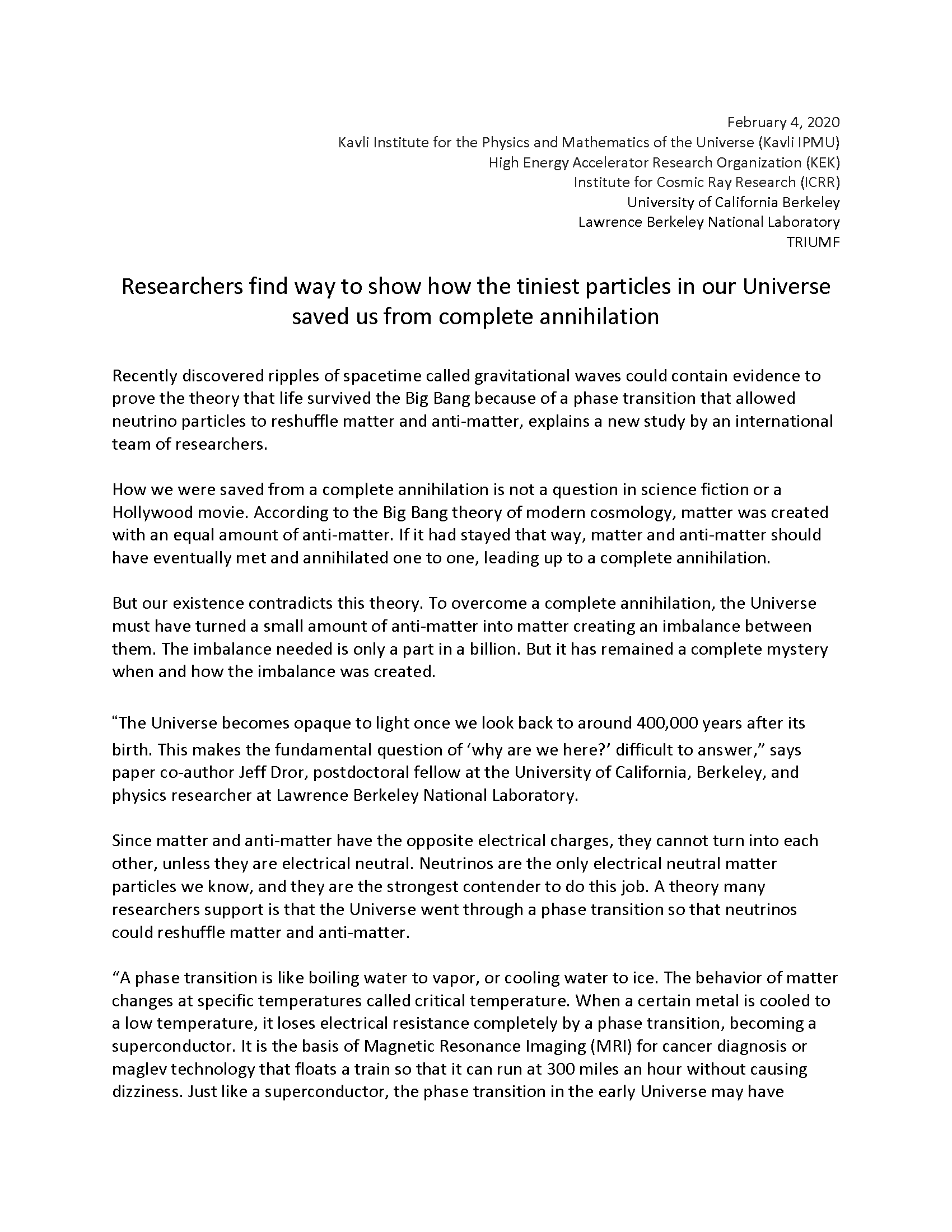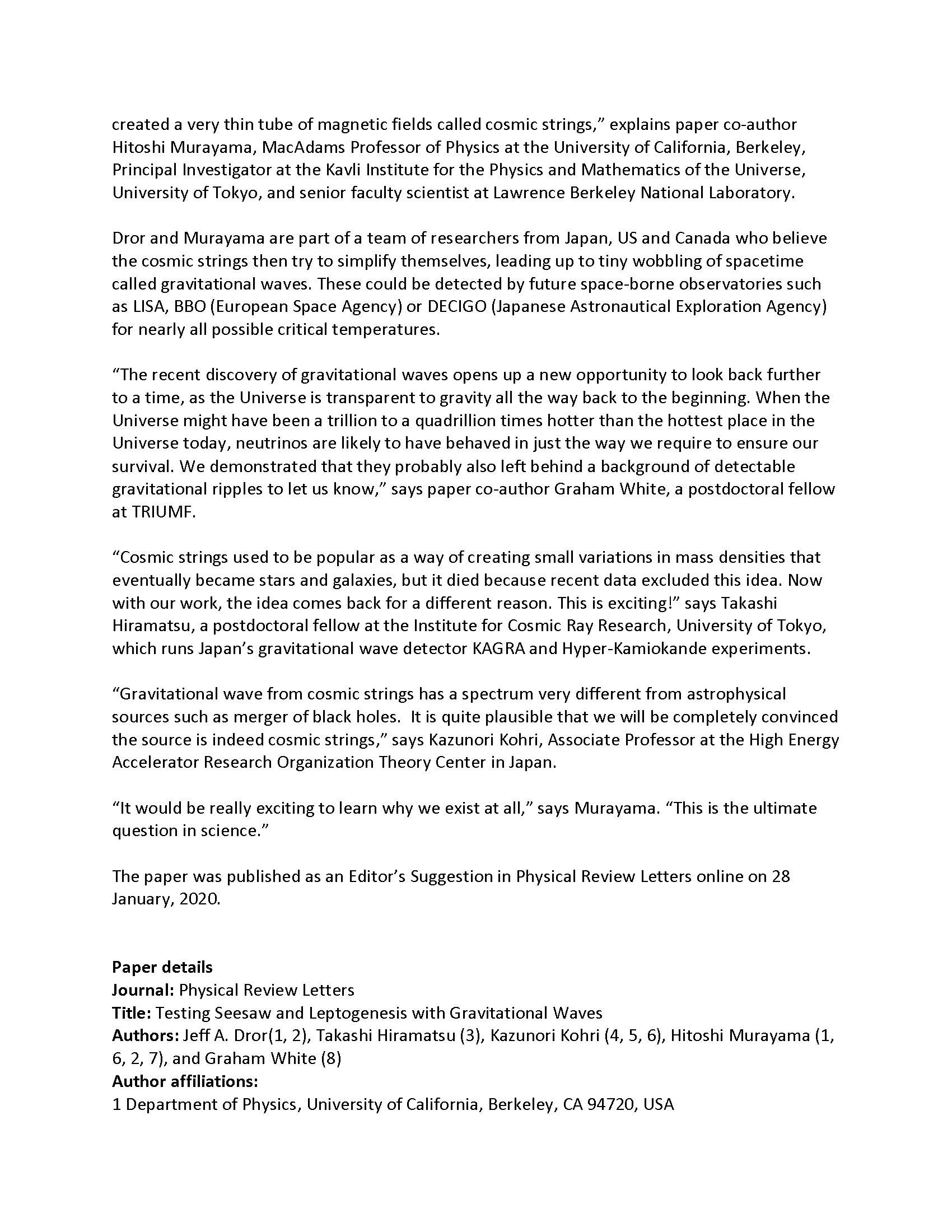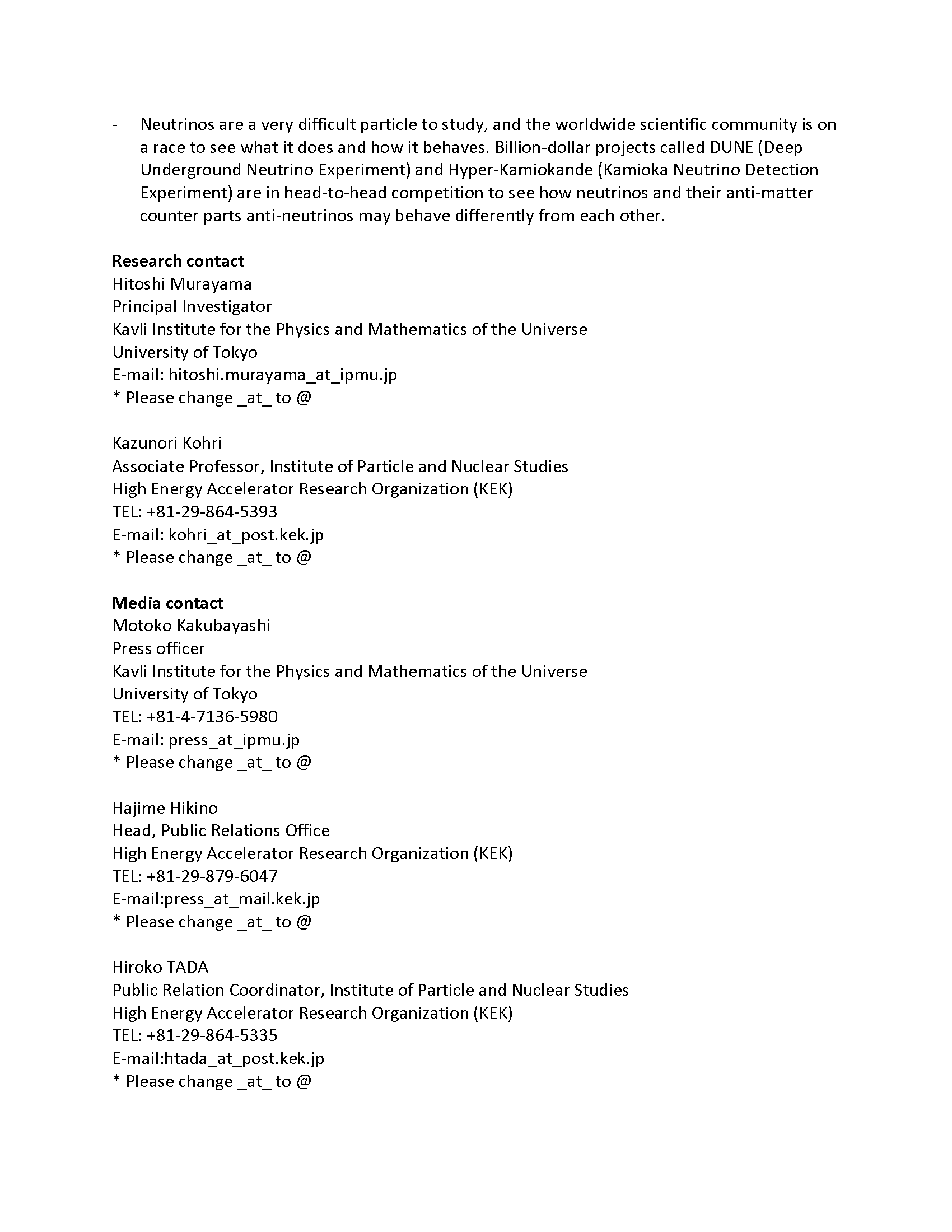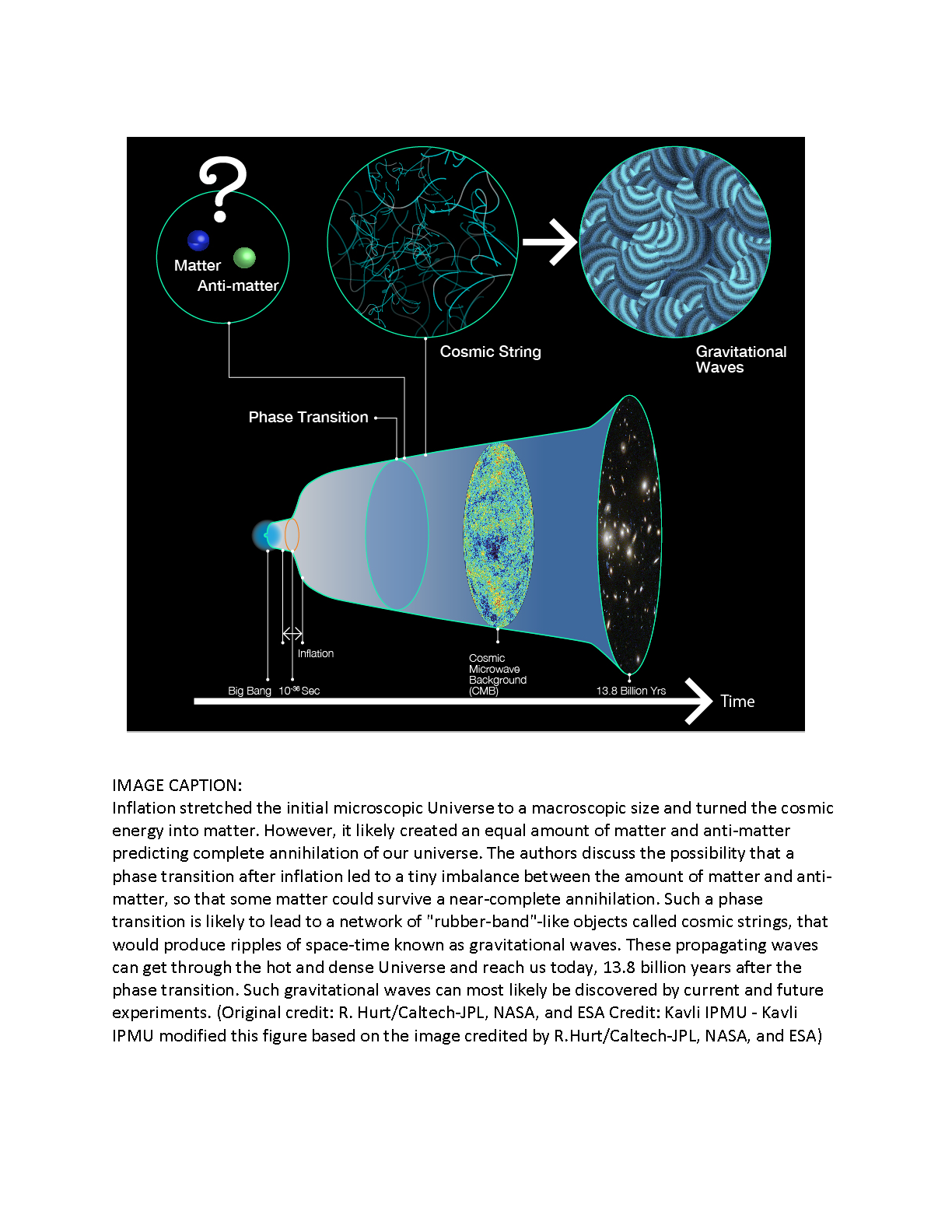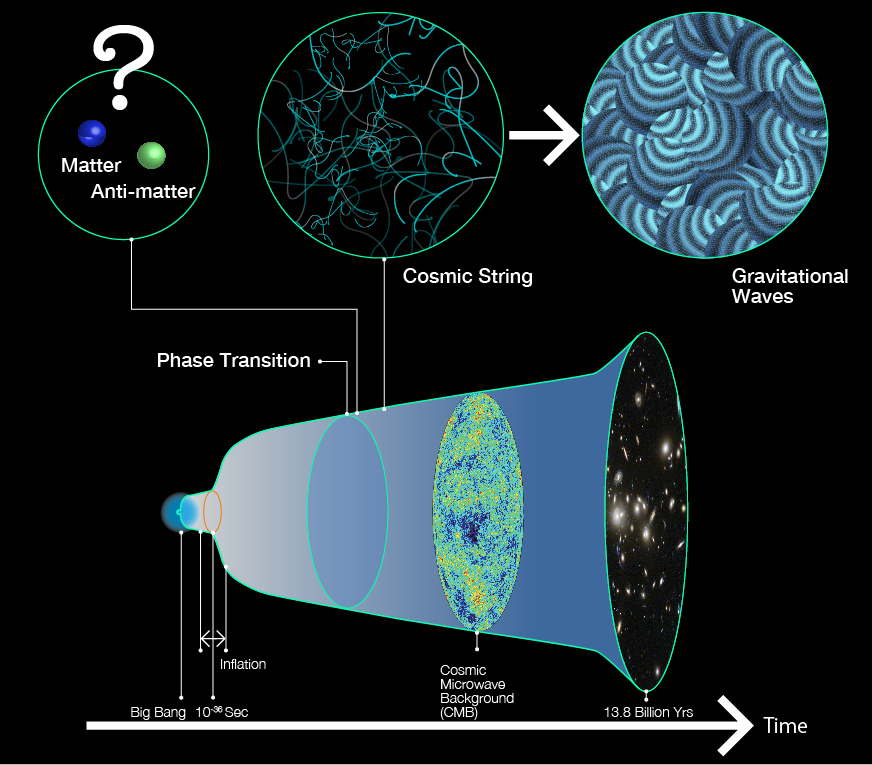
IMAGE CAPTION: Inflation stretched the initial microscopic Universe to a macroscopic size and turned the cosmic energy into matter. However, it likely created an equal amount of matter and anti-matter predicting complete annihilation of our universe. The authors discuss the possibility that a phase transition after inflation led to a tiny imbalance between the amount of matter and anti-matter, so that some matter could survive a near-complete annihilation. Such a phase transition is likely to lead to a network of "rubber-band"-like objects called cosmic strings, that would produce ripples of space-time known as gravitational waves. These propagating waves can get through the hot and dense Universe and reach us today, 13.8 billion years after the phase transition. Such gravitational waves can most likely be discovered by current and future experiments. (Original credit: R. Hurt/Caltech-JPL, NASA, and ESA Credit: Kavli IPMU - Kavli IPMU modified this figure based on the image credited by R.Hurt/Caltech-JPL, NASA, and ESA)
Recently discovered ripples of spacetime called gravitational waves could contain evidence to prove the theory that life survived the Big Bang because of a phase transition that allowed neutrino particles to reshuffle matter and anti-matter, explains a new study by an international team of researchers.
Here is the press release.
Link
- KEK Researchers find way to show how the tiniest particles in our Universe saved us from complete annihilation
- IPMU Researchers find way to show how the tiniest particles in our Universe saved us from complete annihilation
